Portfolio
USAID Energy II IDIQ
USAID Energy II IQC (as subcontractor; completed)
USAID Clean Energy IDIQ Non Critical Priority Countries (consortium member; completed)
USAID Clean Energy IDIQ Critical Priority Countries (consortium member; completed)
Graess Energy UZD
Uzbekistan 2000MW Solar Project – Project Management
Nigeria Off Grid Projects - Developer
Mozambique 100 MW Solar Project - Developer
Malawi Grid Stability Project – Developer
Nigeria Medical Supplies Project – Feasibility Study
South Africa Gas Supply Project – Developer
Case Studies
BAMYAN – 1MW SOLAR PV
One of the major thrusts of the rebuilding process in Afghanistan has been to provide reliable electricity to rural and semi-urban areas in the country. In many places it is the first time power has ever been provided. In 2007, it was estimated that 90% of the population was without access to modern forms of electricity and those who had access to electricity were subject to frequent power cuts. Many communities that did have power provided by international efforts in the mid and early 2000’s received diesel generators that the community were unable to service and sustain.
As the project Prime and lead contractor on the delivery of a 1.05 MW solar PV renewable energy project in the Bamyan area constructed for the Afghanistan Ministry of Energy with funding from the New Zealand government, SESI transformed energy access for the region. This contract is now powering 2,500 homes and businesses in the province of Bamyan with reliable, uninterrupted power to improve the socio-economic situation of recipients.
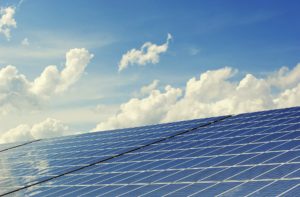 The project uses SMA inverters via the multi-cluster box system to seamlessly draw together PV, battery and diesel generator components. Flooded lead acid batteries were selected for their cycle life and ability to handle the temperature variations that are present in Afghanistan. Supplied by Crown Battery, Ohio, USA, the battery strings are fitted with low water visual indicators and single point watering for simple and effective maintenance. The use of SMA webbox units at each site provides SESI with the ability to provide a remote monitoring service to guide and assist the system operators and identify and tackle potential issues on site.
The project uses SMA inverters via the multi-cluster box system to seamlessly draw together PV, battery and diesel generator components. Flooded lead acid batteries were selected for their cycle life and ability to handle the temperature variations that are present in Afghanistan. Supplied by Crown Battery, Ohio, USA, the battery strings are fitted with low water visual indicators and single point watering for simple and effective maintenance. The use of SMA webbox units at each site provides SESI with the ability to provide a remote monitoring service to guide and assist the system operators and identify and tackle potential issues on site.
In addition to supply of physical infrastructure, this project included the capacity development of the local utility company Da Afghanistan Breshna Sherkat and incorporated a consumer education programme. When SESI design the technical project it also included a comprehensive training component. SESI understood that without the proper training and support from the local population, the technology only approach would not be sustainable. The project, valued at US$14.2 million over 24 months, extended to the provision of project management and community engagements. Innovative aspects such as pre-paid domestic power meters ensure that the revenues collected are sufficient to support the full operational costs of the installation. The project continues to perform well with consumer uptake and revenue collections growing. SESI has also commissioned a baseline data survey of the participating communities from Dr Julienne Corboz of Eureka Research in Kabul. This is a very valuable tool for SESI to measure project success in the future.
HYDRO SHAR DELIR – 140kW
The Shah Delir hydroelectric project involved the refurbishment of a previously failed project, and the installation of a 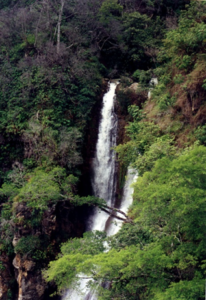 140 kW francis turbine for the US State Department via its Task Force for Business Stability Operations (TFBSO). A complete overhaul and reconstruction was necessary for all civil works, including the intake and forebay. A 3km canal was completely rebuilt, including tunneling around areas prone to slipping. The power house was rebuilt and the horizontal francis turbine installed along with all hydraulic control and synchronisation systems. The transmission and distribution network was rebuilt and pre paid metering installed to ensure that the Shura has access to the revenues needed for sustainable operations. The project site was particularly challenging with numerous security issues to be dealt with in the course of its execution. SESI is very proud of the successful completion of the project for TFBSO in this most difficult location. (Different photo required)
140 kW francis turbine for the US State Department via its Task Force for Business Stability Operations (TFBSO). A complete overhaul and reconstruction was necessary for all civil works, including the intake and forebay. A 3km canal was completely rebuilt, including tunneling around areas prone to slipping. The power house was rebuilt and the horizontal francis turbine installed along with all hydraulic control and synchronisation systems. The transmission and distribution network was rebuilt and pre paid metering installed to ensure that the Shura has access to the revenues needed for sustainable operations. The project site was particularly challenging with numerous security issues to be dealt with in the course of its execution. SESI is very proud of the successful completion of the project for TFBSO in this most difficult location. (Different photo required)
Project Name: Micro Hydro – Diesel Hybrid and Battery Charging
Location: Son La Province, North Viet Nam
Narrative Description of Project:
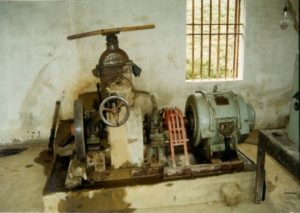
This project was identified and designed by the World Bank as a turn-key technical demonstration of a hydro-diesel hybrid. An existing but derelict 40 kW micro hydro system was rebuilt and a 10 kW diesel generator added to improve the continuity of supply during dry seasons. A battery charging station was also installed to allow the supply of electricity to those households that were too distant to connect to the 4 km of new distribution line constructed as a part of the project.
In recognition of the causes of failure of the first installation, the community was encouraged to form a special purpose co-operative, and to develop productive uses of power to improve the productive output and positive impact of the availability of power to the community. In the then policy and institutional environment, these objectives were not fully realised, and the consultants recommended significant procedural changes in approach for future rural electrification projects and programmes, integrating community mobilisation and productive uses planning simultaneously with the technical planning. The Project has been used as a case study from which the current rural electrification programme has been designed incorporating lessons learned from a project that was “hardware” driven.
Project Name: Community Managed Solar-Diesel Hybrid Energy
Location: Chib Kalmati, Gwadar District, Balochistan
Country: Pakistan
Narrative Description of Project:
This project involved the selection and pre-feasibility studies (social, financial and technical) for a community
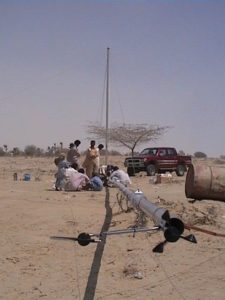
owned and managed solar–diesel hybrid system in coastal Pakistan. A 20 m meteorological data gathering tower recorded solar insolation, wind speed and directional data to clarify the energy generation options open to the community. The design of an energy generation, storage and distribution system was undertaken early in 2002 once technical and financial feasibility was established. A micro-utility has been established to receive technical training in operation and maintenance and management training in bookkeeping, tariff setting, power utilisation, demand side/supply side management, and depreciation planning. The project established a model for remote communities to sustainably operate their own power utilities, and assist replication of the project via a programme run by government and bilateral funding agencies. Investigations were also undertaken to determine the possibility of manufacturing system componentry locally during the course of the assignment.
Project Name: Micro Hydro Optimisation
Location: Thorong Phedi, Nepal
Narrative Description of Project:
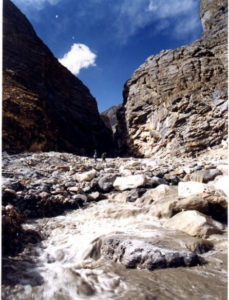 Thorong Phedi is a high altitude (4500 meters) village in the Annapurna Conservation Area of Nepal. This area is a very popular tourist destination and required a sustainable energy supply to meet the heavy needs of the tourist and local population. The King Mahendra Trust for Nature Conservation has installed 4 turbine systems in the ACAP region but has had limited success in maximising utilisation once they are installed. Current power usage in existing sites stands at an average of 25%, and 75% of the potential energy is lost through inefficient generation, transmission or management. This project addressed those areas where improvement could be made. An installation in Thorong Phedi, the base camp below Thorung La Pass, was undertaken to demonstrate enhanced service. The installation included a 20 kW turbine and transmission system, electronic load governors permitting 24 hour operation, technical training for the operators, management training for the village management committee, technical and social training for the staff of KMTNC and local turbine equipment manufacturers. This project succeeded in significantly improving power utilisation and installation performance, while wood fuel and hydrocarbons dependence has been substantially eliminated. Higher utilisation enables provision of extra income-generating services. Profits benefit the wider community.
Thorong Phedi is a high altitude (4500 meters) village in the Annapurna Conservation Area of Nepal. This area is a very popular tourist destination and required a sustainable energy supply to meet the heavy needs of the tourist and local population. The King Mahendra Trust for Nature Conservation has installed 4 turbine systems in the ACAP region but has had limited success in maximising utilisation once they are installed. Current power usage in existing sites stands at an average of 25%, and 75% of the potential energy is lost through inefficient generation, transmission or management. This project addressed those areas where improvement could be made. An installation in Thorong Phedi, the base camp below Thorung La Pass, was undertaken to demonstrate enhanced service. The installation included a 20 kW turbine and transmission system, electronic load governors permitting 24 hour operation, technical training for the operators, management training for the village management committee, technical and social training for the staff of KMTNC and local turbine equipment manufacturers. This project succeeded in significantly improving power utilisation and installation performance, while wood fuel and hydrocarbons dependence has been substantially eliminated. Higher utilisation enables provision of extra income-generating services. Profits benefit the wider community.
Project Name: Wind Power Development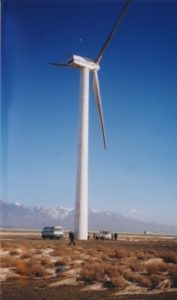
Location: People’s Republic of China, 1999 Xinjiang Autonomous Region and the provinces of Liaoning and Heilongjiang, Inner Mongolia
Narrative Description of Project:
The purpose of the project was to ascertain the opportunities for commercial wind power development from economic, social and environmental as well as financial perspectives, and to recommend appropriate institutional and financial frameworks for extension of existing, and development of new wind power capacity, including pricing, grid inter-tie provisions and incentive frameworks.
Project Name: Community Managed Hybrid Energy Systems
Location: Barangay Malaguicay, Abuyog Municipality, Leyte, Philippines
Narrative Description of Project:
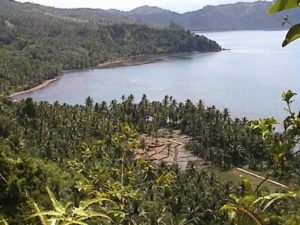 This project aim was to assist the Philippines Department of Energy to expand the range of technical options considered when electrification of remote barangays is undertaken through the missionary O-ilaw electrification program. At the time, only diesel generators offering limited service were used. This project reviewed wind and solar options and integrated them into hybrid energy systems designed to provide 24 hour power, using available renewable energy resources. A 30 metre monitoring tower was installed and correlated wind data obtained through available wind maps, to confirm a viable wind resource. Pivotal aspects of the project were policy review, establishment of an institutional framework, technical and management training models, and setting up the support links essential to sustainability for PNOC-EDC’s forward remote Barangay electrification programme.
This project aim was to assist the Philippines Department of Energy to expand the range of technical options considered when electrification of remote barangays is undertaken through the missionary O-ilaw electrification program. At the time, only diesel generators offering limited service were used. This project reviewed wind and solar options and integrated them into hybrid energy systems designed to provide 24 hour power, using available renewable energy resources. A 30 metre monitoring tower was installed and correlated wind data obtained through available wind maps, to confirm a viable wind resource. Pivotal aspects of the project were policy review, establishment of an institutional framework, technical and management training models, and setting up the support links essential to sustainability for PNOC-EDC’s forward remote Barangay electrification programme.
Project Name: Integrated Energy, Tourism and Income Generation Development in Rural Nepal
Location: Rara Lake National Park, Mugu District, Mid Western Development Region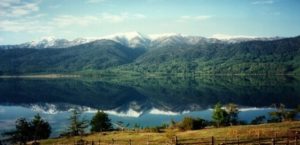
Narrative Description of Project:
For want of facilities, tourism in Nepal was restricted to several well-known geographical regions. These were overburdened and struggling to cope with the tourist pressure on resources. This project was focused at creating an implementation plan for development of sustainable tourism in the Rara Lake National Park area as a means to alleviate poverty and to use tourists as a development vector in this severely underdeveloped region. The plan included improving infrastructure (energy, clean water, accommodation, food security) and building capacity of local people to participate in activities associated with tourism. The aim was to attract tourists to the area and reduce pressure on the overused regions of Everest, Annapurna and Pokhara as well as creating local opportunities for income generation projects utilising the new energy resources.
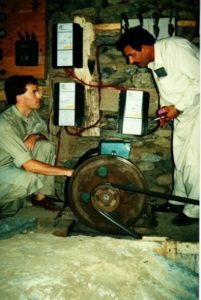 Project Name: Institutional Strengthening for AKRSP Micro-Hydro Programme
Project Name: Institutional Strengthening for AKRSP Micro-Hydro Programme
Narrative Description of Project:
This project proceeded from identification of possible improvements in the village electrification program run by the AKRSP in the Chitral Valley in North Pakistan. The local engineers and social organisers required training in integration of the program activities in order to maximise the development impacts of electronically controlled reliable electricity from community managed installations. These areas included training in new control technology, aspects of turbine design, improving the efficiency of low voltage distribution systems, powerhouse safety, energy management and planned maintenance. Technical inputs included writing technical training manuals and the preparation of training materials for use for the future replication of the training. Social and community development activities included training master trainer social mobilisers and engineers in integrated development planning to maximise use of the micro-hydro installations to improve livelihoods.
Project Name: Renewable energy based water lifting technologies and formation of water user associations in a Barani area of Pakistan
Narrative Description of Project:
Pakistan has many areas of isolated low grade agricultural lands that are not serviced by any electricity or water reticulation or, in many cases, roading. 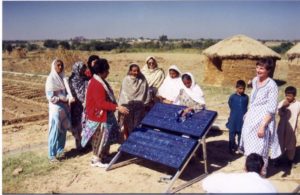 Under the policy of devolution, administration of the water resources used in these areas is being handed back to the communities to manage themselves, but in many cases the communities are not equipped to do this on a technical or managerial level.
Under the policy of devolution, administration of the water resources used in these areas is being handed back to the communities to manage themselves, but in many cases the communities are not equipped to do this on a technical or managerial level.
The project aim was to demonstrate with the Water Resources Research Institute a model for setting up water user associations in micro-communities, and also to demonstrate and provide training on simple renewable energy water lifting technologies (solar and water ram pump) to lift water in areas where no other energy resources are available. The project has assisted the community to raise high value low water demand vegetables, for which they have received an award.
Project Name: Hospital Boiler Plant Review.
Location: Nelson Hospital, Nelson, New Zealand.
Narrative Description of Project:
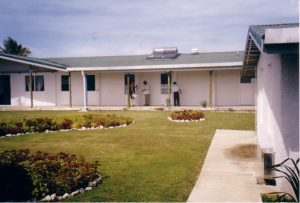 The Hospital was in the process of a major building redevelopment and there was concern that the boiler plant would not be capable of meeting steam demand on completion of the redevelopment. In addition, the hospital laundry throughput is expected to increase with associated increases in steam requirements.
The Hospital was in the process of a major building redevelopment and there was concern that the boiler plant would not be capable of meeting steam demand on completion of the redevelopment. In addition, the hospital laundry throughput is expected to increase with associated increases in steam requirements.
The project involved a detailed study of existing steam demand and preparation of future demand forecasts covering both new and redeveloped buildings and increased laundry throughput. The results were analysed and compared with the capacity of the existing plant. Options to increase steam output were identified to cover both best and worse case forecasts and economic and financial analyses prepared for consideration by the District Health Board.
Project Name: Renovation of the Lord Liverpool Hospital.
Location: Alofi South, Niue Island
Narrative Description of Project:
Following a health development study undertaken in 1998, the World Health Organisation agreed to provide funding for the redevelopment of the Lord Liverpool Hospital, the only provider of health services (primary, secondary and public health) in Niue. Additional funding was later provided by NZAid and AusAid. Worley were appointed by the New Zealand Ministry of Foreign Affairs and Trade as consultants for the project and the terms of reference included extensive community consultation which was undertaken by Ann McLean. Following the consultation phase, the renovation design took place, followed by construction.